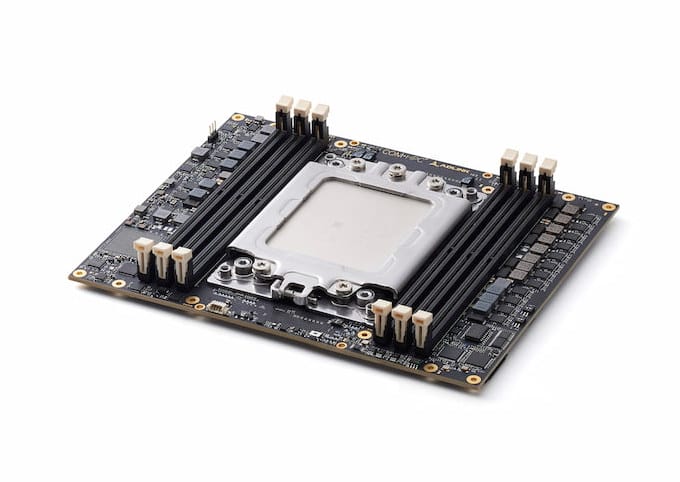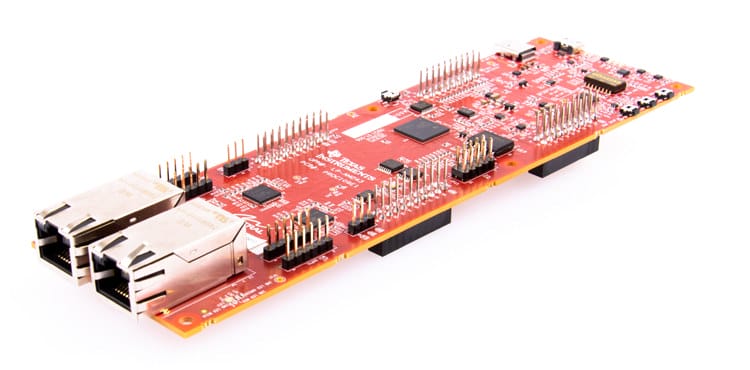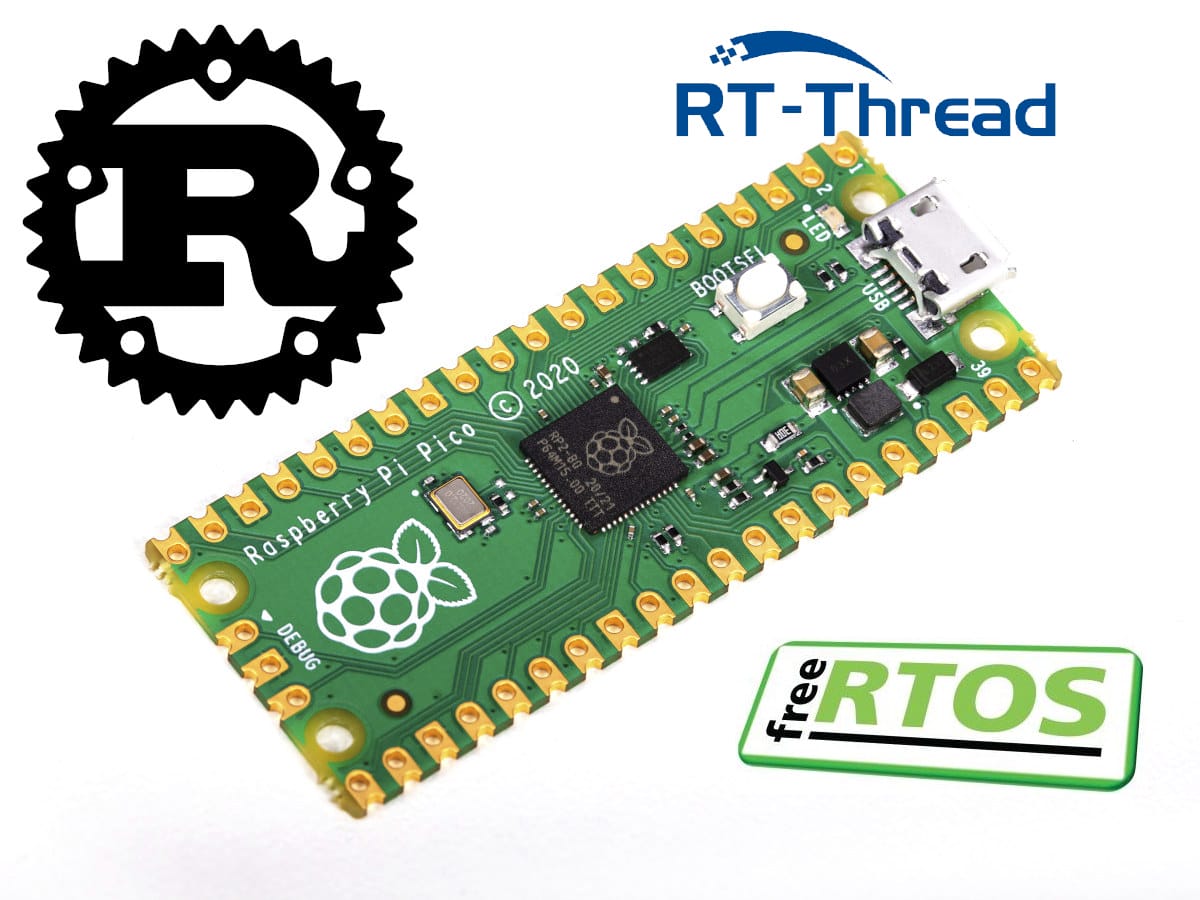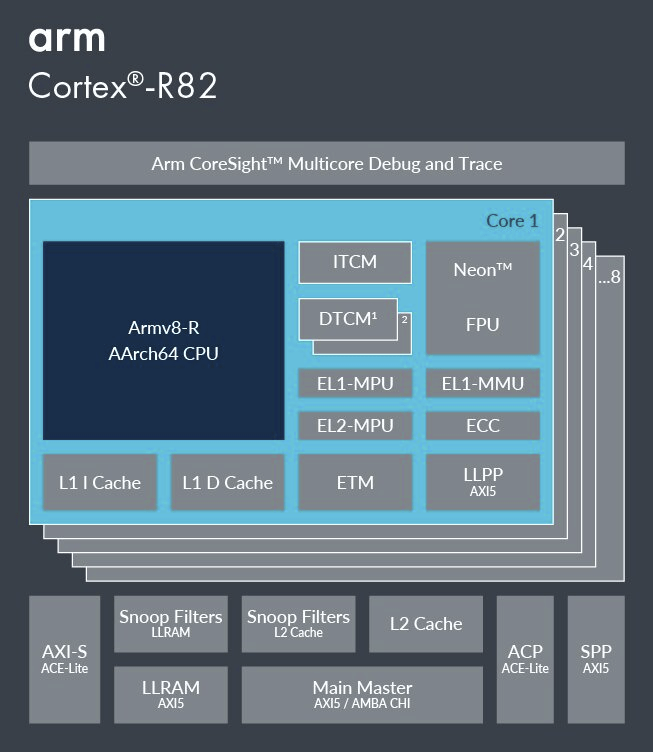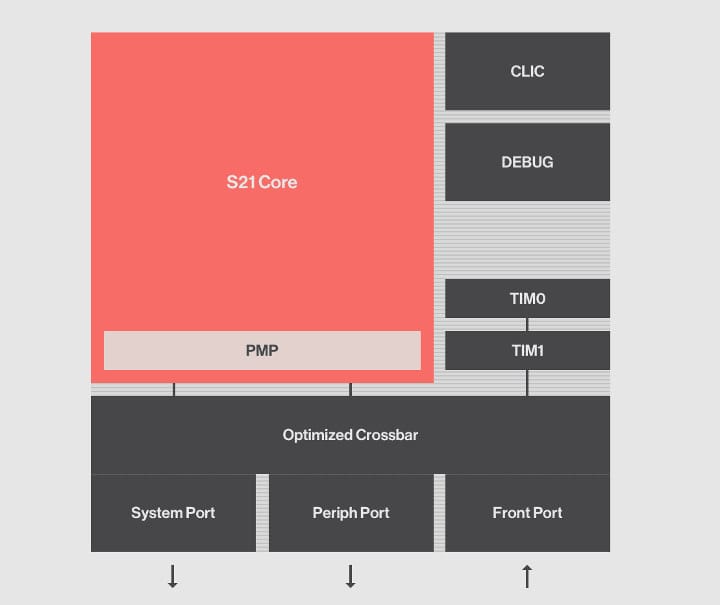TQ Embedded (aka TQ) has just announced the availability of the TQMa117xL system-on-chip module based on NXP i.MX RT1170 crossover processor family, and as well as MBa117xL single board computer (SBC) based on the 31×31 mm module. TQMa117xL’s small size has been achieved thanks to a 277-pad LGA design, with the module still integrating LP-SDRAM, Quad-SPI NOR flash and EPROM, a PMIC, as well as an optional security chip. TQMa117xL i.MX RT1170 SoM Specifications: Crossover processor (one or the other) NXP i.MX RT1171 with Cortex-M7 @ up to 1 GHz (Consumer) or 800 MHz (industrial), 1 GbE (AVB) NXP i.MX RT1172 with Cortex-M7 @ 800 MHz/ 1 GHz, graphics accelerators and camera/display interfaces, 1GbE (AVB) NXP i.MX RT1173 with Cortex-M7 @ 800 MHz (industrial only), Cortex-M4 @ 400 MHz, 1GbE (AVB), graphics accelerators and camera/display interfaces, tamper inteface NXP i.MX RT1175 with Cortex-M7 @ 800 MHz / 1 GHz, Cortex-M4 […]
ADLINK COM-HPC Ampere Altra 80-core Arm server module targets embedded applications
ADLINK has integrated Ampere Altra, an up to 80-core Armv8.2 server processor with up to 175W TDP, into a COM-HPC module designed for embedded applications, together with the AVA Developer Platform equipped with a 32-core processor and housed in an “ultra-silent liquid-cooled tower system”. Both the ADLINK COM-HPC Ampere Altra module and the developer kit are compliant with the just-announced Arm’s Scalable Open Architecture for Embedded Edge (SOAFEE), a “software initiative and reference implementation providing a cloud-native environment for embedded edge development”. ADLINK COM-HPC Ampere Altra COM-HPC Ampere Altra key features and specifications: SoC – Ampere Altra with 32x to 80x Armv8.2 Neoverse N1-based cores with up to 3.3 GHz frequency, up to 128 lanes of high-speed PCIe Gen4 and 8×72 ECC protected DDR4 3200 memory; TDP: 60 to 175 Watts depending on the number of cores System Memory – Up to 768GB DDR4 with 6x individual memory channels Networking […]
LP-AM243 dual Gigabit Ethernet MCU board features TI Sitara AM243x Cortex-R5F microcontroller
The few microcontroller boards that get Ethernet, are often limited to 10 Mbps or 100 Mbps, but the LP-AM243 LaunchPad development kit comes with two Gigabit Ethernet ports controlled by the newly announced 800 MHz Texas Instruments Sitara AM243x Cortex-R5F microcontroller with industrial communication and security features. TI Sitara AM243x Cortex-R5F microcontroller The Sitara AM243x is the first family of microcontrollers part of the larger Sitara AM2x MCU series that, a bit like NXP i.MX RT crossover processors, aims to combine the advantages of traditional microcontrollers and microprocessors by leveraging the real-time capabilities of the former and the high performance of the latter, but in a way optimized for industrial communication and safety. The Sitara AM243x family is comprised of three processors with one, two, or four cores with the following key features and specifications: CPU AM2431 – Single-core Cortex-R5F real-time core @ 800 MHz with 128KB TCM AM2432 – Dual-core […]
3D printer board leverages Allwinner A64’s AR100 core for real-time control
Elias Bakken has been working on Recore 3D printer control board based on Allwinner A64 processor since 2019 and with revision “A5” of the PCB, Recore is now considered stable and will ship to customers. But wait? Isn’t Allwinner A64 just a quad-core Cortex-A53 processor meant to run Linux? But 3D printer control boards require real-time I/O and that’s why many are designed with STM32, Arduino compatible Microchip MCU or other microcontrollers. The trick here is that Elias did not use the Cortex-A53 cores for real-time control, but instead the 300 MHz AR100 32-bit OpenRISC 1000 core found in Allwinner A64 SoC. Recore specifications: SoC – Allwinner A64 quad-core Cortex-A53 processor running at 1 GHz, with AR100 32-bit core @ 300 MHz, Mali-400MP2 GPU System Memory – 1 GB DDR3 RAM Storage – 8 GB eMMC flash Video Output – HDMI output to connect a display Networking – Gigabit Ethernet […]
Embedded Artists launches 1GHz NXP i.MX RT1176 Crossover MCU module and devkit
Microcontrollers used to be those cute little chips clocked at 8 MHz, but it’s now common to have MCUs clocked at one or two hundred Megahertz, and with Cortex-M7 cores, several hundred Megahertz is now possible, and NXP even pushed the limit to one Gigahertz with their i.MX RT1170 series of Cortex-M7/M4 Crossover MCUs announced over a year ago. Embedded Artists has now made a computer-on-module and a corresponding devkit based on NXP i.MX 1176 Crossover MCU clocked at one Gigahertz. iMX RT1176 uCOM MCU module delivers up to 6468 Coremarks, comes with up to 32MB SDRAM, 16MB QSPI flash, optional WiFi and Bluetooth, and various peripherals in a tiny 45x42mm form factor. iMX RT1176 uCOM module Specifications: SoC – NXP i.MX RT1176 processor with Cortex-M7 core up to 1 GHz/800MHz (Commercial vs industrial), Cortex-M4 core up to 400/200 MHz, 2MB internal SRAM, 2D GPU with OpenVG 1.1 support and […]
Raspberry Pi Pico Gets supports for Rust, RT-Thread OS and FreeRTOS
In January end, we saw the launch of Raspberry Pi Pico equipped with an RP2040 dual-core Cortex-M0+ microcontroller working up to 133 MHz with official support for MicroPython and C. In this feature, we will be discussing the Raspberry Pi Pico’s flexible software support compatible with RP2040 MCU, apart from the MicroPython, C/C++, and upcoming Arduino IDE software support. We will specifically be focusing on Rust, RT-Thread OS, and FreeRTOS support for Raspberry Pi Pico. Rust Code Running on Raspberry Pi Pico Rust language is considered fast, reliable, and secure when it comes to IoT gateways. It also opens up the option for writing extremely low-level code, such as operating system kernels or microcontroller applications. Porting Rust with RP2040 for working with Raspberry Pi Pico was seen in Jonathan Pallant’s Twitter Feed. The RP2040 comes with an external QSPI flash. The internal mask-ROM reads the programs from the external flash […]
Arm Cortex-R82 is a Linux Capable, 64-bit Real-time Processor for Computational Storage Applications
Arm hast just unveiled Cortex-R82 64-bit real-time processor that is Linux-capable and designed for “next-generation enterprise and computational storage solutions”. What’s computation storage? To clearly understand what we’re dealing, let’s first find out what computational storage is via SNIA website: Computational Storage is defined as architectures that provide Computational Storage Services coupled to storage, offloading host processing, or reducing data movement. A Computational Storage Service (CSS) is a data service or information service that performs computation on data where the service and data are associated with a storage device. So If I understand correctly, so far all we asked from SSD’s, hard drives, and other storage, was to move and store data as fast as possible to a host device capable any analyzing the data. But computational storage brings this to the storage device itself, so we may soon have Smart Hard Drives that run Linux and do some of […]
SiFive S2 RISC-V Core may be the World’s Smallest 64-bit Embedded Core
Last year, SiFive introduced their first RISC-V cores competing with Arm Cortex-R family of processors thanks to their S7 Series 64-bit RISC-V Core IP providing an answer to Arm Cortex-R7/R8 32-bit real-time processors. The company has now announced the SiFive S2 RISC-V core that it claims to be the world’s smallest 64-bit embedded core, and also the first SiFive IP core without any direct competitive equivalent in the market. For now, there’s only one core in the family with SiFive S21 offering the following key features: RISC-V ISA – RV64IMAC 64-bit AXI Ports Machine and User Mode with 4 Region Physical Memory Protection 3-stage pipeline with Simultaneous Instruction and Data Access 2 Banks of Tightly Integrated Memory (TIM) CLIC (Core Local Interrupt Controller) with 127 interrupts Advanced debug with 4 hardware breakpoints/watchpoints Performance – 1.6 DMIPS/MHz; 3.2 Coremarks/MHz The company compares its to the SiFive S5 cores, which I had […]



